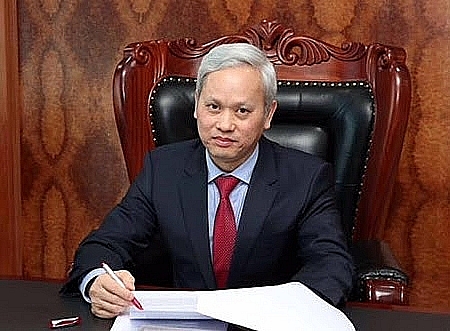 |
| Dr. Nguyen Bich Lam (photo), former General Director of General Statistics Office |
What are the reasons behind Vietnam’s need to increase gasoline prices in recent years? Will gasoline prices fluctuate in the near future, sir?
After basically controlling the Covid-19 pandemic, the global economy is facing high commodity prices, input material prices, especially gasoline prices. That’s because global economic activities are thriving, along with rapidly increasing demand for gasoline, while oil production has not increased correspondingly, leading to tight supply.
Additionally, the alliance between the Organization of the Petroleum Exporting Countries and its allies (OPEC+) announced that they would stick to the production plan, instead of making it higher as required by major oil consuming countries including the US and India. Besides, the world is suffering from an energy crisis and facing a severe winter. Thus, many countries are increasing their petroleum reserves, causing oil prices to rise.
In the future, the global petroleum market may still fluctuate; the petrol price is likely to increase. The world’s important energy forecasting organizations including OPEC, the International Energy Organization, and the US Energy Information Administration all forecast that crude oil prices could reach US$100/barrel in the summer of 2022.
According to your analysis, oil price adjustment is a must to cope with the impacts of the global gasoline prices. So how will this affect Vietnam’s economy?
Our country’s economy depends heavily on imported raw materials from foreign countries, with the proportion of cost of imported materials in the total cost of raw materials of the whole economy at 37%. An increase in world gasoline prices will push up the prices of imported and domestic raw materials.
Along with fluctuations in global oil prices, in the first nine months of 2021, the domestic gasoline price was adjusted 16 times, making the average gasoline price in nine months increase by 24.1% over the same period last year, causing the consumer price index to increase by 0.89%. In the production of goods and services, most industries, more or less, use petroleum. Petrol costs account for about 3.52% of the total production costs of the whole economy. This shows that petroleum accounts for a high proportion and has a strong impact on the cost of manufactured products.
In particular, the increase in gasoline prices has a strong impact on industries that use a lot of petroleum such as fishing, transportation of goods and passengers by road, waterway, and air.
Not only that, the rise in gasoline prices also increases the price of goods in circulation, puts pressure on inflation, reduces the competitiveness of domestically produced goods, adversely affects economic growth. For Vietnam, a 10% increase in gasoline prices reduces GDP by about 0.5% – a rather large reduction, reflecting the strong impact of petroleum price fluctuations on economic growth.
Notably, the rise in gasoline prices also directly increases the consumer price index (CPI), affecting people’s income and spending. A 10% increase in the petrol price makes CPI increase by 0.36%. Besides, spending on petroleum accounts for 1.5% of total final household consumption. When gasoline prices rise, households will restructure and partially cut spending, which reduces aggregate demand in the economy.
To ensure the growth rate in 2021 as well as the growth target in 2022 and control inflation in the future, what solutions do we need to implement, sir?
The 4th wave of the Covid-19 pandemic is the main reason why our country’s economic growth in 2021 is forecast to reach a much lower level than the plan. 2022 is also an important year that creates a foundation for the goals of the Five-Year Plan 2021-2025. At the opening session of the 2nd session, the 15th National Assembly, the Government proposed a socio-economic development plan in 2022, in which the growth rate of gross domestic product reached about 6-6.5%; average CPI growth rate was about 4%.
In the current forecast of the international and domestic situation, advantages, disadvantages, and challenges are intertwined, but difficulties and challenges are dominant. Specifically, the world economic growth is not stable and is forecasted to be lower than in 2021; risks continue to increase; domestically, the resilience and resources of the State, businesses, and people have decreased, and inflation pressure has been high. Therefore, when developing scenarios for GDP growth and inflation control the target of 4% quarterly and for the whole year 2022 is taken as the basis for providing appropriate and flexible management solutions. In addition to factors such as public investment capital, fiscal and monetary policies, fluctuations in petrol prices need special attention to minimize adverse effects on growth and inflation. Because for our country’s economy, petroleum is one of the strategic goods, its selling price is managed on the basis of ensuring the interests between the state, businesses, and people.
Thus, given the importance of petroleum for production and consumption in the economy, it is forecast that gasoline prices may continue to increase in the remaining months of 2021 and the first half of 2022. Accordingly, the Ministry of Industry and Trade, the Ministry of Finance and businesses need to closely follow the evolution of the petroleum market and the world political situation that can affect the petroleum supply. Thereby provide flexible solutions to minimize adverse impacts on growth and inflation in the remaining months of 2021 and in 2022.
Thank you, sir!
